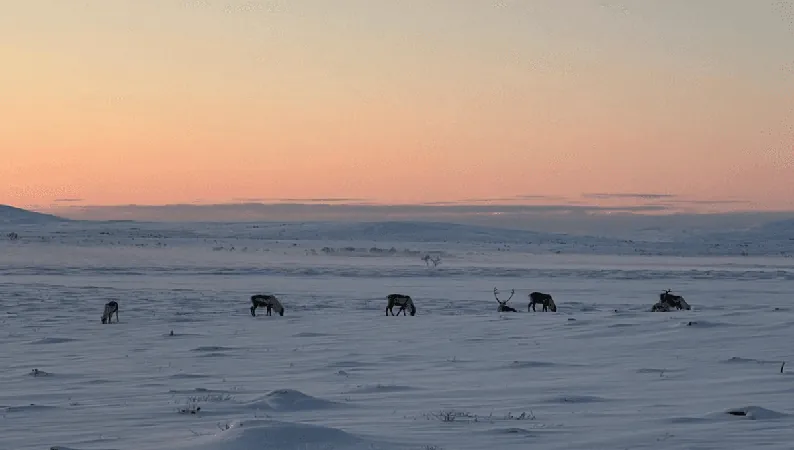
Reindeer: The Unsung Heroes in the Fight Against Climate Change
2025-09-18
Author: John Tan
A Looming Climate Crisis: The Carbon Time Bomb
Imagine a world where warming from fossil fuels triggers a catastrophic cycle, releasing carbon previously trapped in our ecosystems. This nightmare scenario is not just a possibility; it’s a looming threat that we might struggle to halt even if we completely stop our emissions.
The Importance of Northern Ecosystems
The Arctic tundra and northern forests play a crucial role in maintaining our planet's climate stability. They are responsible for absorbing around half of the carbon dioxide produced on land, safeguarding an estimated trillion tons of carbon. As climate patterns become increasingly erratic, these areas are facing significant risks, particularly with unpredictable snow seasons.
Cutting-Edge Research in Finland
To explore how the release of carbon is influenced by climate change and wildlife, researchers investigated 42 plots in Finnish pine forests from 2019 to 2023. Their findings are revealing: in Oulanka, where reindeer had been excluded for 25 years from part of a site, researchers compared grazed versus ungrazed areas. They also manipulated snow levels to monitor carbon emissions.
Startling Findings on Snow Depth and Carbon Release
The results were alarming. During years with abundant snow, carbon release was minimal. In contrast, lower snowfalls led to significant carbon emissions, especially in the summer months when the soil became drier. Carbon released from ungrazed areas soared to three times higher than that from grazed plots during low-snow years.
The Grazing Advantage of Reindeer
Remarkably, in the grazed areas of Oulanka, carbon emissions were negligible, even with little snow. It appears that the positive effects of grazing linger long after reindeer have departed, although not for multiple decades. PhD student Noora Kantola noted the resilience of northern coniferous forests to short-term winter climate changes may hinge on these grazing patterns.
Lichens: The Unsung Secret?
To validate these findings, further research is needed to establish whether it’s indeed the reindeer causing this difference, or if an overlooked factor is at play. Researchers suspect that lichens, grazed by reindeer and recovering slowly in the cold climate, might be influencing soil conditions and carbon release.
The Need for Reindeer Restoration
The implications are profound: in areas where grazing has recently occurred, forests seem to survive even in low-snow years without releasing vast amounts of carbon. Conversely, areas devoid of reindeer are at risk of becoming carbon bombs due to their lichen-rich conditions.
An Effective Climate Strategy?
With declining populations of reindeer and caribou, prioritizing their restoration may be essential for climate action. As researchers continue their exploration into grazing's impact on forest ecology, it’s clear that these majestic creatures could hold the key to mitigating climate change.
If Only They Could Fly…
Imagining flying reindeer not only makes for a good story but also brings a whimsical thought: if they existed, perhaps they'd bypass barriers and prevent carbon untethering from our soils. Until then, let's save the reindeer on solid ground—our planet's future may just depend on it.


 Brasil (PT)
Brasil (PT)
 Canada (EN)
Canada (EN)
 Chile (ES)
Chile (ES)
 Česko (CS)
Česko (CS)
 대한민국 (KO)
대한민국 (KO)
 España (ES)
España (ES)
 France (FR)
France (FR)
 Hong Kong (EN)
Hong Kong (EN)
 Italia (IT)
Italia (IT)
 日本 (JA)
日本 (JA)
 Magyarország (HU)
Magyarország (HU)
 Norge (NO)
Norge (NO)
 Polska (PL)
Polska (PL)
 Schweiz (DE)
Schweiz (DE)
 Singapore (EN)
Singapore (EN)
 Sverige (SV)
Sverige (SV)
 Suomi (FI)
Suomi (FI)
 Türkiye (TR)
Türkiye (TR)
 الإمارات العربية المتحدة (AR)
الإمارات العربية المتحدة (AR)